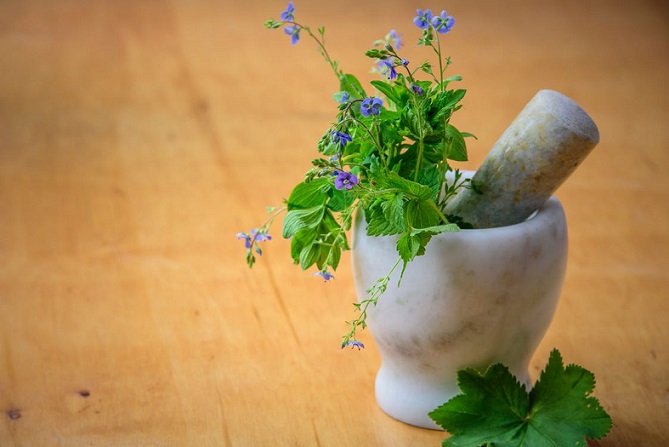Avoiding Infection with Natural Healing
Regardless of whether you’re are battling a respiratory infection, cut yourself and didn’t treat it properly or just had surgery in the hospital, infection can be very serious. The CDC says that germs are everywhere and “Some germs are helpful, others are harmful. Many germs live in and on our bodies without causing harm, and some even help us to stay healthy. Only a small portion of germs are known to cause infection.”
The most common reason for readmission to a hospital after checking out is an infection. In fact, according to a study performed in 2012, 26 percent of read missions were linked to infections at the surgical site. Hospitals are known to be hotbeds for germs, and many people joke that they weren’t even sick before they went into the hospital.
Antibiotics and antiviral medications have become less effective as germs have evolved and become resistant to traditional treatments. In our modern society, many people are looking to simplify and use natural healing methods for a variety of ailments including infections. Natural remedies work elegantly in tandem with the human body without any of the uncomfortable side effects of medications and harsh treatments.

Essential Oils to the Rescue
Essential oils have been around for hundreds of years, but their popularity over the past few years has soared. Concentrated essential oils are very potent and effective in treating infections and other ailments. The key is to dilute them properly before applying to the skin.
Due to the high concentration levels, essential oils can cause irritation and rashes if not applied correctly. You should always test a small amount first on the bottom of your feet (the least sensitive part of the body).
Some common essential oils used in healing are:
- lavender
- lemongrass
- cedarwood
- sandalwood
- chamomile
- eucalyptus
- bergamot
- peppermint
Once you know you are safe from any adverse reaction, you can apply essential oils to your ankles, over vital organs, your neck, back, abdomen, behind your ears, over your temples, and the crown of your head. Always start with a small amount; you can always add more later.

Healing Herbs
Most of us take herbs for granted. The same herbs that we add to our food to make our meals taste great also contain hidden healing powers. Oregano, for example, is a pure, natural antioxidant, with antibacterial, anti-fungal, and antiviral properties. This one plant packs a lot of healing into its tiny leaves.
Peppermint is one of the oldest herbs to be used for medicinal purposes. It helps with digestion, easing an upset stomach, soothing skin irritations, reducing inflammation, and it acts as an analgesic. Thyme is another fragrant but useful herb that helps with throat infections, mouth sores, as well as tonsillitis and laryngitis. Rosemary is said to protect the brain against neurological diseases like Alzheimer’s.
Naturalists claim the best way to heal is the from the inside out. Oregano, thyme, sage, peppermint and other healing herbs should be ingested for the most effective solution. Usually, the plants can be crushed and steeped in water to create a healing brew. These herbs work as a preventative before getting an infection, not just as a remedy after an infection has taken root.

Food as Medicine
Many people believe that everything we need to stay healthy already exists in nature. Common foods we eat every day contain naturally occurring health benefits. Garlic, for instance, is a powerhouse of preventative medicine with its anti-inflammatory goodness. Garlic can stave off infection, help regulate blood pressure, treat diabetes, and relieve allergies. Mythical lore also suggests that garlic keeps vampires away.
Ginger is another fantastic food with powerful healing capabilities such as boosting the immune system, fighting infection, reducing inflammation, and even helping to fight cancer. People also use ginger as a digestive aid, and it works great for relieving nausea. Ginger is a pro at fighting both bacterial and fungal infections.
Turmeric is more than 4,000 years old and has been used to treat illness for as long as people have been alive. Today, turmeric is touted as one of the most potent antioxidants and anti-inflammatory agents around. Healers use it to prevent cancer, relieve arthritis pain, help with cholesterol, gastrointestinal issues, diabetes, and blood clotting.

Raw Honey is another one of nature’s gifts. It comes from honey bees, is unprocessed, untouched by human hands, and contains a wealth of valuable healing solutions. It also never goes bad. Raw honey is antifungal, antibacterial and antiviral; it is also a powerful antioxidant. You can use it to heal wounds and infections topically. It works great for soothing teeth, gums, and a sore throat.
These days many people are looking for alternatives to the standard pharmaceutical options for treatment. Natural healing remedies are becoming more mainstream and currently rivaling traditional methods for effectiveness and certainly for affordability. Besides the fact that natural healing remedies often work faster, better and are less expensive, they also include no unwanted side effects. Natural healing is a win, win all around.
Using what nature provides us to heal is so important such as herbs, foods that have natural healing powers, and utilizing them in every way we can. Natural healing is part of living a natural, healthy lifestyle and a self reliant and self sufficient life. This article is part of a wonderful group of bloggers that I am participating with to help you learn skills to be self-sufficient and self reliant so please check out all the valuable information on Self Reliance Challenge for 2019.
Do you have any favorite herbs or natural healing tips? Please share them in the comments section below.
Please share this article to help spread the word of natural healing and self-reliance!

Pingback: 7 Health Benefits of Eucalyptus for a Healthier Life